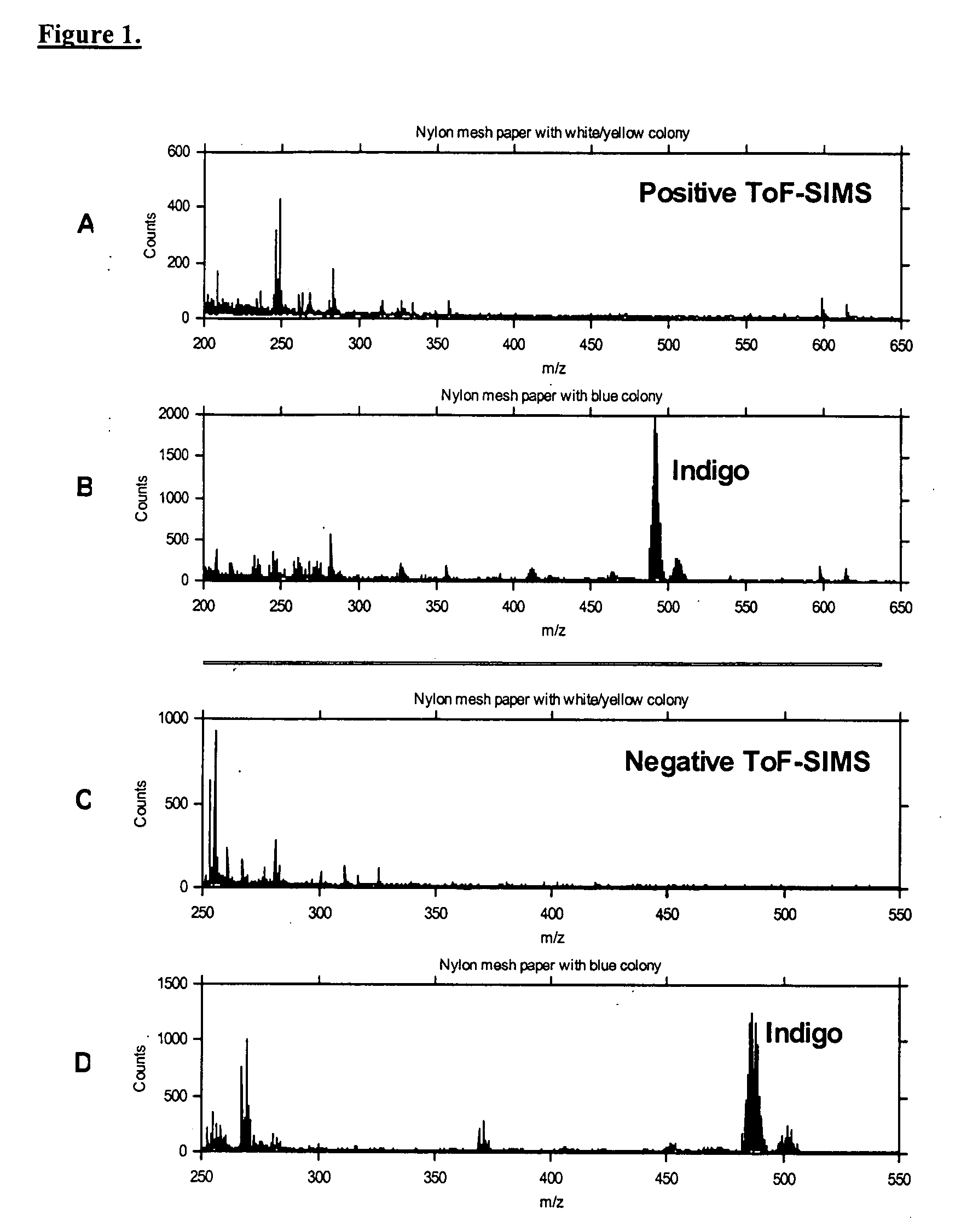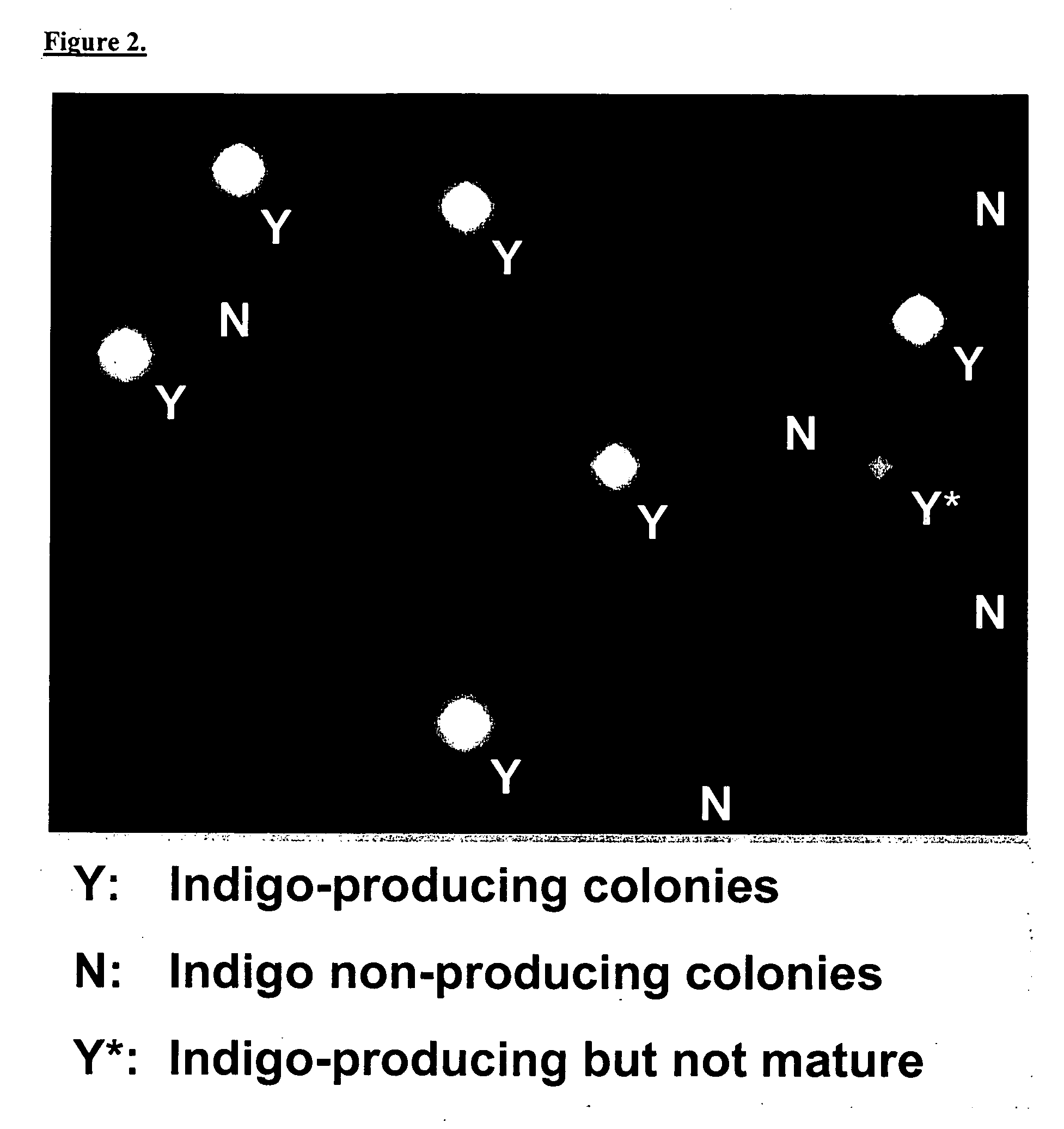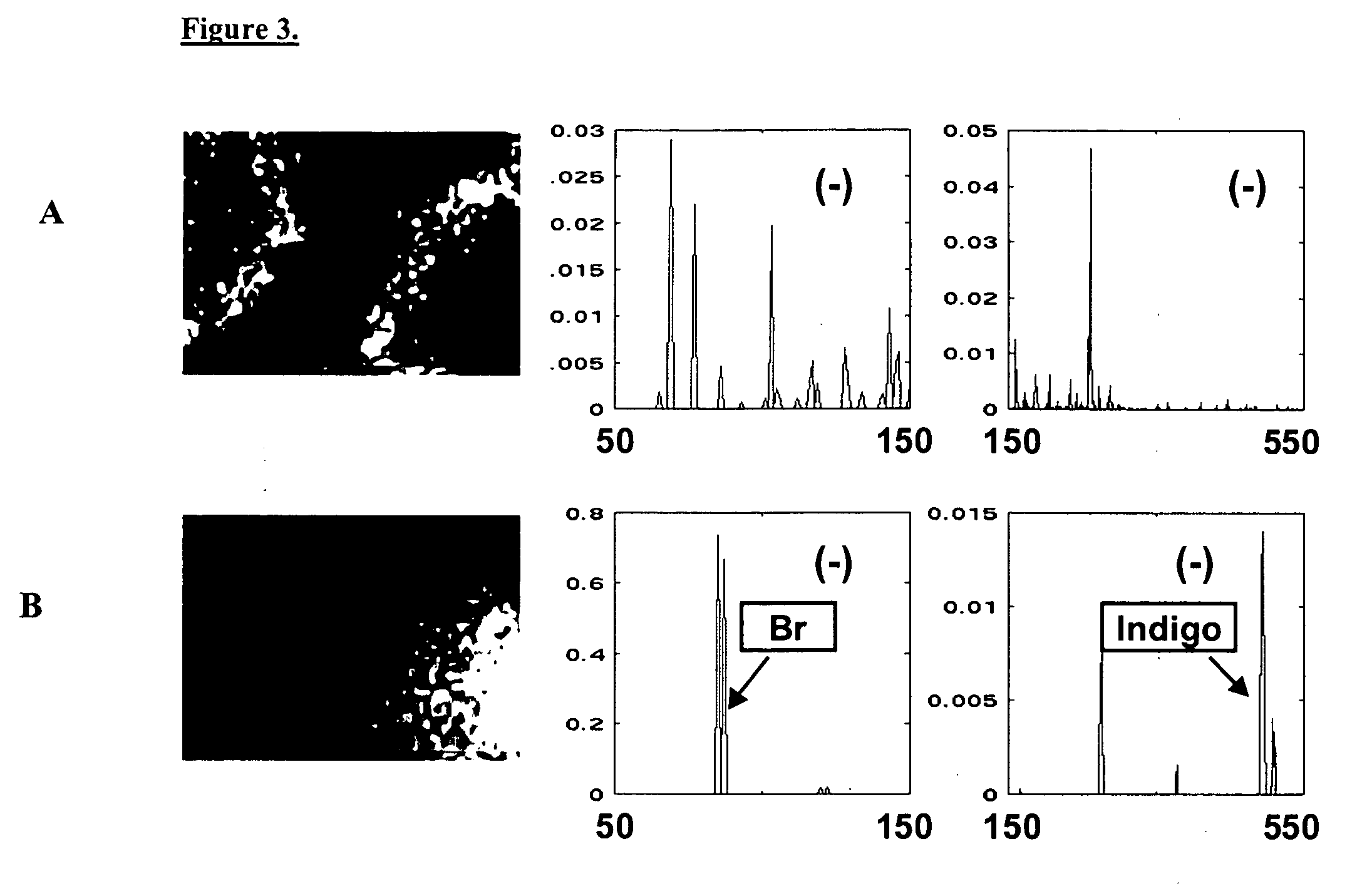Direct detection method for products of cellular metabolism using ToF-SIMS
a technology of cellular metabolism and detection method, applied in the microbiology field, can solve the problems of the extension of the screening process to microbial products still requires culturing time and considerable sample handling
- Summary
- Abstract
- Description
- Claims
- Application Information
AI Technical Summary
Problems solved by technology
Method used
Image
Examples
example 1
ToF-SIMS Identification of E. coli Expressing β-galactosidase through Indigo Detection
[0101] This example demonstrates the ability of ToF-SIMS to distinguish a bacterial colony that expresses the β-galactosidase enzyme from one that does not. It uses a system in which there is a clear visual change in those organisms able to convert reactant (colorless 5-bromo-4-chloro-3-indolyl-β-D-galactoside) to product (blue indigo derivative), allowing immediate verification of the TOF-SIMS data. This example also demonstrates a method for transferring a collection of bacterial colonies from solid growth medium to the high-vacuum analysis chamber of the ToF-SIMS instrument, while maintaining the spatial relationship of the colonies.
Test System:
[0102] The Escherichia coli lacZ gene encoding β-galactosidase (β-gal) is a classical histochemical reporter gene (Beckwith, J. R. Lac: The genetic system. In The Operon. J. H. Miller and W. S. Reznikoff, Eds. Cold Spring Harbor Laboratory: Cold Sprin...
example 2
Different Methods of TOF-SIMS Screening of Randomly-Arrayed Bacterial Colonies
[0106] The present Example describes three different methods for screening randomly-arrayed bacterial colonies, based on: 1.) acquisition of single-point spectra from known colony locations; 2.) mapping over a region containing multiple colonies by rastering the primary ion beam; and 3.) mapping over a region containing multiple colonies by rastering the sample stage under the primary ion beam. Using each methodology, E. coli colonies that did and did not produce a TOF-SIMS detectable product (e.g., the indole derivative of X-Gal) were identified in an array.
Colony Screening via Single-Point TOF-SIMS Analysis
[0107] As described in Example 1, a nylon membrane was prepared that was covered with a mixture of E. coli colonies including blue colonies expressing β-galactosidase and white colonies not expressing β-galactosidase. A sample of the membrane was transferred to the ToF-SIMS instrument as described ...
example 3
ToF-SIMS Detection of E. coli Expressing Phenylalanine; Ammonia Lyase
[0120] This example demonstrates ToF-SIMS detection in a system in which the product is a water-soluble low-molecular-weight organic acid, for which there is no visual change in those organisms able to convert reactant to product. This example also demonstrates a method whereby colonies able to produce product can be differentiated spectroscopically even when molecular secondary ions specific to product are not detected.
E. coli Expressing Phenylalanine:Ammonia Lyase:
[0121] To demonstrate TOF-SIMS detection of E. coli expressing an enzymatic activity that isn't as easily detectable as beta-galactosidase, we used a phenylalanine: ammonia lyase (PAL) from Rhodosporidium toruloides that had been mutated as described in U.S. Pat. No. 6,368,837. This enzyme had enhanced tyrosine:ammonia lyase (TAL) activity, however in the instant example only the PAL activity was assayed.
[0122] Phenylalanine ammonia-lyase (PAL) (EC ...
PUM
| Property | Measurement | Unit |
|---|---|---|
| pressure | aaaaa | aaaaa |
| pore size | aaaaa | aaaaa |
| pressure | aaaaa | aaaaa |
Abstract
Description
Claims
Application Information
 Login to View More
Login to View More - R&D
- Intellectual Property
- Life Sciences
- Materials
- Tech Scout
- Unparalleled Data Quality
- Higher Quality Content
- 60% Fewer Hallucinations
Browse by: Latest US Patents, China's latest patents, Technical Efficacy Thesaurus, Application Domain, Technology Topic, Popular Technical Reports.
© 2025 PatSnap. All rights reserved.Legal|Privacy policy|Modern Slavery Act Transparency Statement|Sitemap|About US| Contact US: help@patsnap.com



